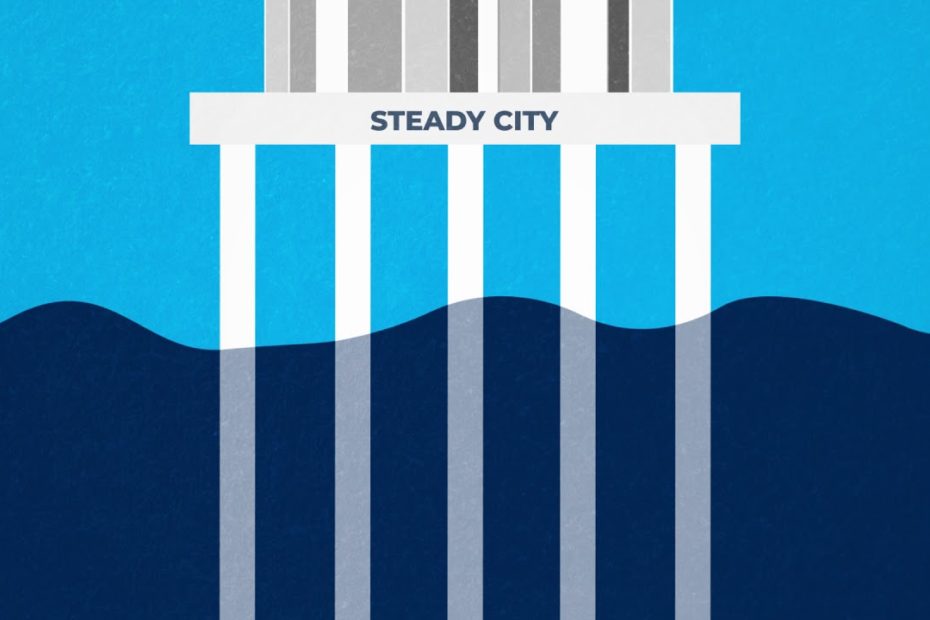When a wave hits an iceberg, seals sleeping on it rarely feel it move. Floating oil rigs operate on the same principle. The submerged pontoons that support these floating societies are so heavy, workers often play ping pong on the high seas.
Buckminster Fuller specified this deep-ballast design for his floating city a half century ago, later writing that floating cities will hold
“their centers of buoyancy 100 feet below the ocean’s surface. Structural columns rise from the submarine pontoons…to support the floating city high above the crests of the greatest waves, which thus pass innocuously below the city’s lowest flooring, as rivers flow under great bridges.”
Critical Path (1981), Buckminster Fuller
Stability on the sea can be secured not just by building deep, but wide.
Kelvin Ko, an engineer at Blue21, has calculated that if floating platforms are interlinked to be wider than the length of the waves, residents won’t feel any disturbance.
And the oldest Japanese construction company, Shimizu, calculated that their future floating city will be wide enough to dampen waves of any size.
If oil rig workers play ping pong in the North Sea and cruise ship passengers play mini-golf all over the world, Seasteads can provide comfort for their residents, especially since they’ll be built in the ocean’s calmest waters.
If you’d like to learn more about the floating cities designed by Buckminster Fuller, Blue21, and Shimizu, read Seasteading: How Floating Nations Will Restore the Environment, Enrich the Poor, Cure the Sick, and Liberate Humanity from Politicians.
Created by Joe Quirk and Jackson Sullivan.

